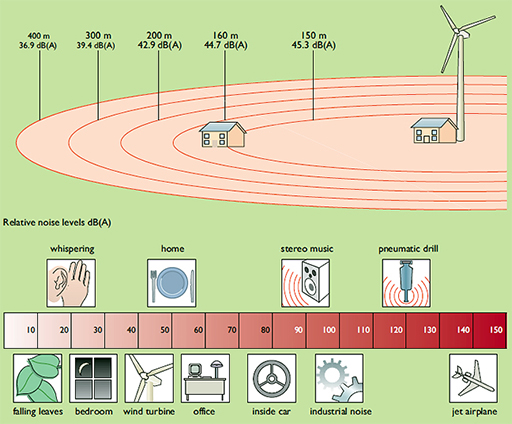6.1 Wind turbine noise
Wind turbines are often described as noisy by opponents of wind energy, but they are not especially noisy compared with other machines of similar power rating – see Figure 15.
There are two main sources of wind turbine noise:
1. Mechanical noise, produced by equipment such as the gearbox or generator, which can be reduced significantly by using quieter gears, mounting equipment on resilient mounts, and using acoustic enclosures.
2. Aerodynamic noise, due to the interaction of the airflow with the rotor, which can best be described as a ‘swishing’ sound. It is affected by the trailing edge of the blades and the interaction of the airflow with the blades and the tower. It tends to increase with the speed of rotation, so some turbines are designed to operate at lower rotation speeds during periods of low wind.
Most commercial wind turbines undergo noise measurement tests and the measured noise levels provide information that enables the turbines to be sited at a sufficient distance from habitations to minimise (or avoid) noise nuisance. In the UK current limits are set at 35 – 40 dB (A) for daytime and 43 dB (A) for night-time.
If noise is not given careful consideration at both turbine design and project planning stages, accounting for the concerns of people who may be affected, opposition to wind energy development is likely.
You’ll now look at electromagnetic interference.

